How to Stop Your Dog From Pulling on the Leash
- Anja Boecker
- Updated: 2023-05-31
A walk can be so beautiful. Your dog walks calmly beside you and you enjoy nature together. In reality, he's not so relaxed. He pulls on the leash like crazy. This article will help you enjoy your walks.
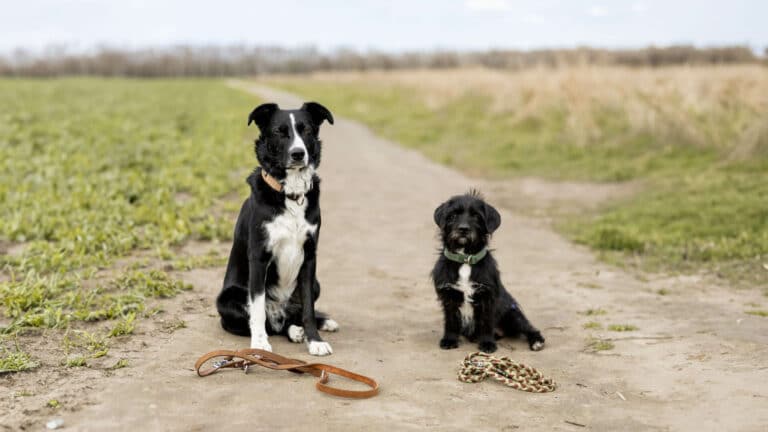
Granted: Walking is less fun when you have to use so much strength.
With puppies and small dogs, this is usually not a problem. But with larger and stronger dogs, things are different.
Relaxed running is a lot more fun. With a little patience and consistent training, your dog will notice.
Why is my dog pulling on the leash?
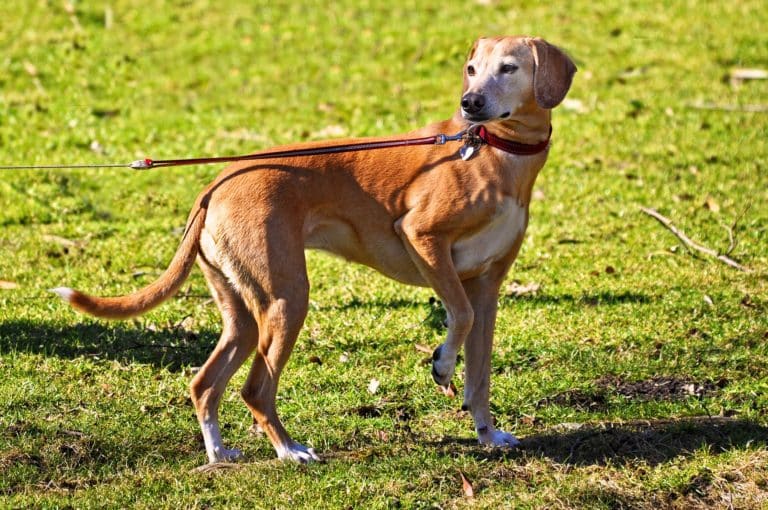
There are several reasons. What type of dog is your dog? Is he curious by nature? Or does he just want to explore as much as possible? For example, hunting dogs will pull on the leash when they pick up an interesting scent.
For all furry friends a walk is an exciting experience. There are so many interesting smells and exciting things to discover.
Young dogs are especially curious. A walk is still something new to them. Leash Training they have not yet been taught to walk quietly beside their master or mistress.
And why should they do it alone when there's so much to sniff out?
There are many distractions for your pet on the street: lots of people, other pets, and other animals. You look very different to him. His attention is not on you.
It's for all the other exciting things around him. No wonder he doesn't adapt to your walking pace.
Many dogs know the usual routes. Maybe you go to a park where your favorite dog loves to play? Or to friends who always have a treat for him?
If he is particularly excited about his destination, he will pull even harder on the leash. After all, he wants to get there as quickly as possible.
He pulls hardest at the beginning and end of the walk. This is normal: In the beginning, your dog is looking forward to the walk.
Then, when you're back within range of your home, he'll want to come back quickly and repeatedly.
After all, he has to defend his territory again. Maybe he also knows that there is food after the walk. Then it is even more worthwhile to come home quickly.
Remember that many dogs simply run faster than we do. They have more stamina and want to be challenged. Most of the time they also don't understand that we don't want to run as fast as they do.
Pulling on the leash quickly becomes a habit. Your dog will want to make his own way. If he sees something interesting, he wants to go there.
And as fast as possible. If you allow this behavior, he will achieve his goal. He will see that pulling works and will do it more often.
Many dog owners assume that their pet is exhibiting dominance behavior by pulling on the leash.
But this is usually not the case. They are just very excited and interested in their surroundings. They often don't even notice when their masters or mistresses slow down.
So do not punish your faithful companion for it. He has not learned otherwise. It is much more important to break him out of this behavior with a few tricks.
6 Possible Reasons
There are many reasons why your dog may pull on the leash. Here are some of them:
- Excitement: Your dog may just be excited and want to get to new smells, people or other animals quickly.
- Hunting Instinct: Your dog may be following his natural instinct to chase or explore something.
- Education: Your dog may not have learned to walk on a leash, or he may not have received obedience training.
- Anxiety or Stress: In some cases, pulling on the leash may be a sign of anxiety or stress, such as being in a new or scary environment.
- Dominance: Sometimes dogs will try to take the lead by walking ahead or pulling on the leash.
- Excess Energy: Sometimes dogs pull on the leash because they have too much energy and need to release it.
Puppy Is Pulling on the Leash: 4 Possible Reasons
It is normal for puppies to pull on their leash. Here are some reasons why:
- Curiosity: For puppies, the world is new and exciting, and they want to explore. They pull on the leash to get to new smells, sounds, and places quickly.
- Ignorance: Puppies do not yet know how to behave on a leash. They have not yet learned not to pull.
- Energy: Puppies often have a lot of energy and can't wait to get out and play.
- Fear: In some cases, a puppy may pull on the leash out of fear or insecurity.
In order to train your dog to pull off the leash, it is important to start early and have a lot of patience.
Reward your puppy for good behavior and be consistent in your expectations. It's a learning process, but over time your puppy should learn to walk well on a leash.
Training Needs Consistency
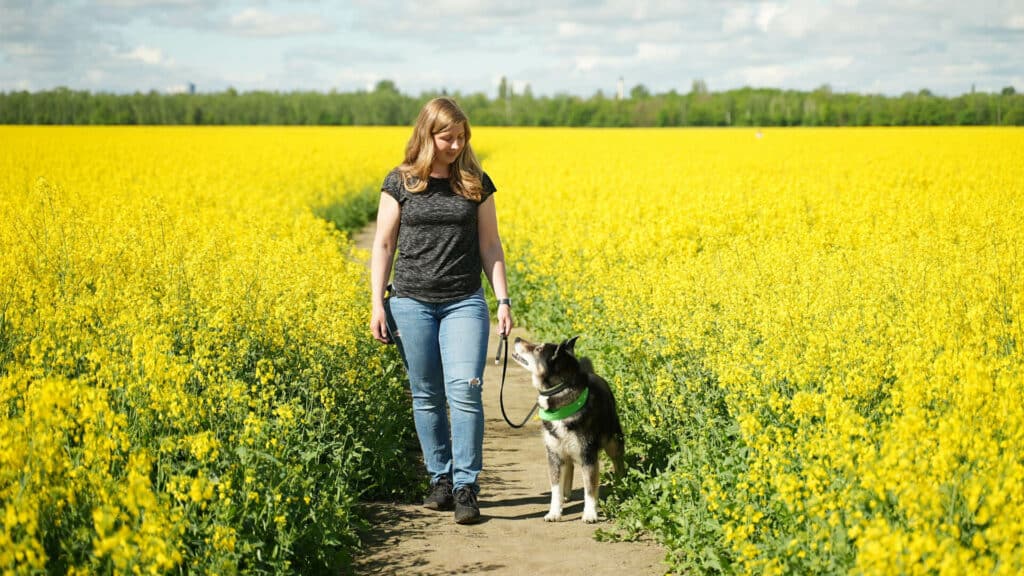
Training is not easy and will take a long time. Especially with older dogs it is very difficult.
They are used to it. This is why it is important to properly train puppies from the beginning.
Remember to Follow These Tips! Training must be consistent. If your pet is allowed to pull on the leash sometimes and not sometimes, the training is invalid.
If he is allowed to pull, the training will take even longer, or he will not learn at all. So you should always forbid it.
Your goal is to keep the leash slack without interruption. This is only possible when your dog is walking next to you and you are walking at approximately the same speed.
But don't confuse this with the "heel" command. In this case, your pelt-nose must walk right next to your left leg.
That would be too exhausting during the whole walk. So normally this command is not needed.
By simply walking without pulling, your pet will have more freedom. This is also more fun for him. It is important that the leash is not too tight. You decide where and how fast you want to go!
What is a "Halti Dog Collar"?
A Halti for dogs is a type of head harness that allows you to guide and control your dog. It works much like a horse halter. But like any training tool, it must be used correctly.
Sometimes dogs find it uncomfortable and it takes a while for them to get used to it. A halti can be helpful when a dog is pulling hard on the leash. It can help control the pull by directing the dog's head. Since dogs follow their head, the halti can help steer the dog in the desired direction.
However, it is important to use the Halti correctly and to guide the dog gently to avoid injury. Also, a halti should not be used as a substitute for good leash training. Rather, it is a tool that can contribute to better leash training.
5 Methods You Should Never Use
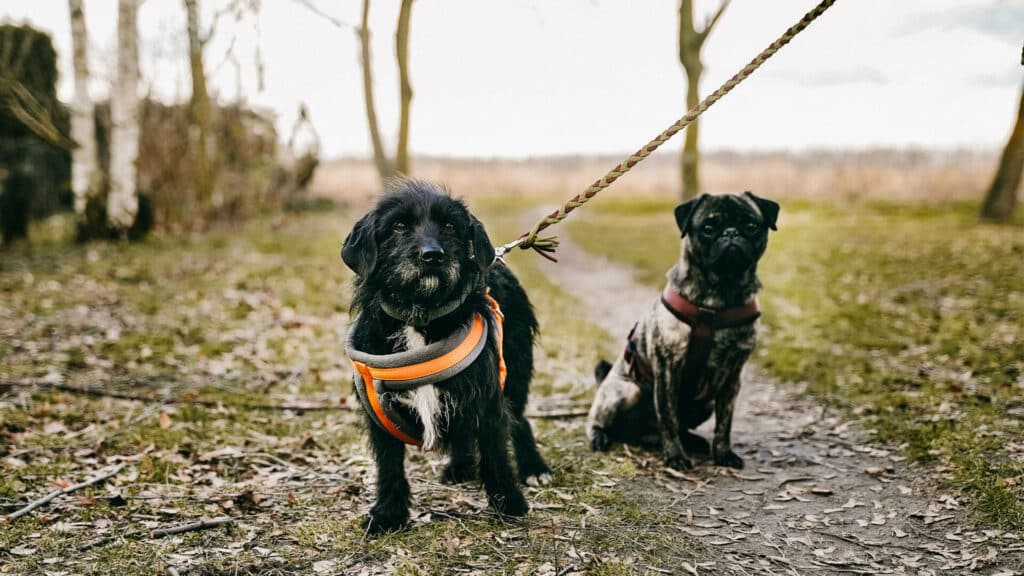
1) Jerky Retraction
Many dog owners pull hard on the leash when their dog runs too fast. You should never do this. Even if it seems to work at first, it won't help in the long run. After a short time, your dog will start pulling again. Because he does not know what he did wrong. Maybe he just ran in the wrong direction. Besides, this kind of punishment is not good for your relationship. It hurts him and in some cases can even cause damage to his neck.
2) Furling Lines (Flexi Lines)
These leashes are especially popular with the little furry noses. They have more freedom of movement and can set their own pace. The leash unwinds by itself if your favorite runs faster than you. They are definitely not the way to break a dog's pulling habit. He will have too much freedom and will not learn to run at the same pace as you. He will also not know what radius to stay in around you. Leashes that do not exceed a certain length are best.
3) Electric Collars / Spiked Collars
You should never use these collars. They will only frighten and hurt your dog. It takes away the joy of walking and damages your relationship. Punishment is not a good way to teach or break your charge. It is better to reward good behavior.
4) Do Not Punish
Punishment, such as yelling or pulling on the leash, can frighten the dog and make the situation worse. Avoid punishment or reprimands, as this can lead to loss of confidence and training problems. Punishing or yelling at your dog when he doesn't obey a command can cause him to develop fear or insecurity. Use positive reinforcement and patience instead.
5) Dog Meeting
If your dog pulls on the leash to greet other dogs, it is often better to not let him do so until he has calmed down. If you allow your dog to greet other dogs every time he pulls on his leash, he will learn that there is a reward for pulling on his leash. The goal is to teach your dog to only greet when he is calm. For example, you can keep your dog at a distance until he stops pulling and then allow him to approach the other dog. It is also important to always pay attention to the other dog's body language and behavior. Not all dogs are open to greeting other dogs, especially if they are on a leash.
Remember:
- Not Too Short a Leash: A leash that is too short may cause the dog to feel restricted and pull more.
- Don’t Let the Dog Win: If the dog pulls to accomplish something and you let him pull, he will learn that pulling leads to the goal.
- Don’t Be Inconsistent: Letting him pull sometimes and not pulling him sometimes will confuse your dog and make training more difficult.
- Avoid Stress: If your dog is in a stressful environment, pulling may be exacerbated. Try to choose quiet and familiar places for leash training.
5 tips against pulling
Your dog pulls on the leash and nothing works? Try these 4 tips:
# Tip 1: Stop as Soon as Your Dog Pulls
Your dog needs to learn that pulling will not bring success. He also needs to pay attention to you during the walk and not be completely distracted. There is a simple way to teach him this.
As soon as your dog pulls hard on the leash, you stop. You interrupt the walk. He will be confused at first and may pull even harder.
But stay consistent and don't pay any attention to him. After a short time, he will come to terms with the fact that he can't get where he wants to go.
He will turn to you and wait to see what happens next. Now you have his attention.
# Tip 2: Rewards
When your pet takes a few steps toward you, reward him. But also if he stops patiently. Then the walk can continue.
But when he stops pulling, you can reward him again. He remembers that. So it is worth it for him to walk quietly beside you.
You'll probably need to stop a lot on your first few hikes. But even though it's annoying, don't make exceptions.
Only consistent persistence will bring something in the end. So do not allow him to pull in any way. After all, your pupil has to learn that he is not allowed to do that.
After some practice, your dog will stop pulling on the leash. Increase the level of difficulty.
Run faster or slower. Suddenly change direction. If your dog follows, reward him. This will teach him to follow you and adapt to you.
# Tip 3: Change Direction
An alternative to standing still would be to change direction. Is your darling running faster than you again? Then just turn around and run in the opposite direction.
That way, he won't reach his destination and you'll be in front of him again. He will have no choice but to follow you.
For puppies, going for a walk is something completely new. Of course, they're not really walking beside you yet. But you can easily get your young dog used to it.
Reward him every time he walks quietly beside you. Now he will do this more and more, hoping for more treats. Also, his attention is now on you because you are holding the food bag.
If your furry friend becomes distracted, bring his attention back to you. For example, tell him his name and he will focus on you again.
# Tip 4: Use to Capacity
It can also help to keep the dog more busy. Some dog breeds naturally need a lot of exercise and therefore need to be kept on a leash. Play and romp a lot with your dog. This way he can really let off steam and is calmer during the walk.
Be patient and stay calm. It can take a while to learn to walk on a leash, and excitement or frustration can make the process difficult.
# Tip 5: Use leash
For leash training with a pulling dog, a regular leash is best. With a leash you can be closer to your dog and react more directly to his behavior. The drag leash is used more for free running training or retrieve training. You can find more information about the drag line and drag line training in this article: Tips for effective dragline training.
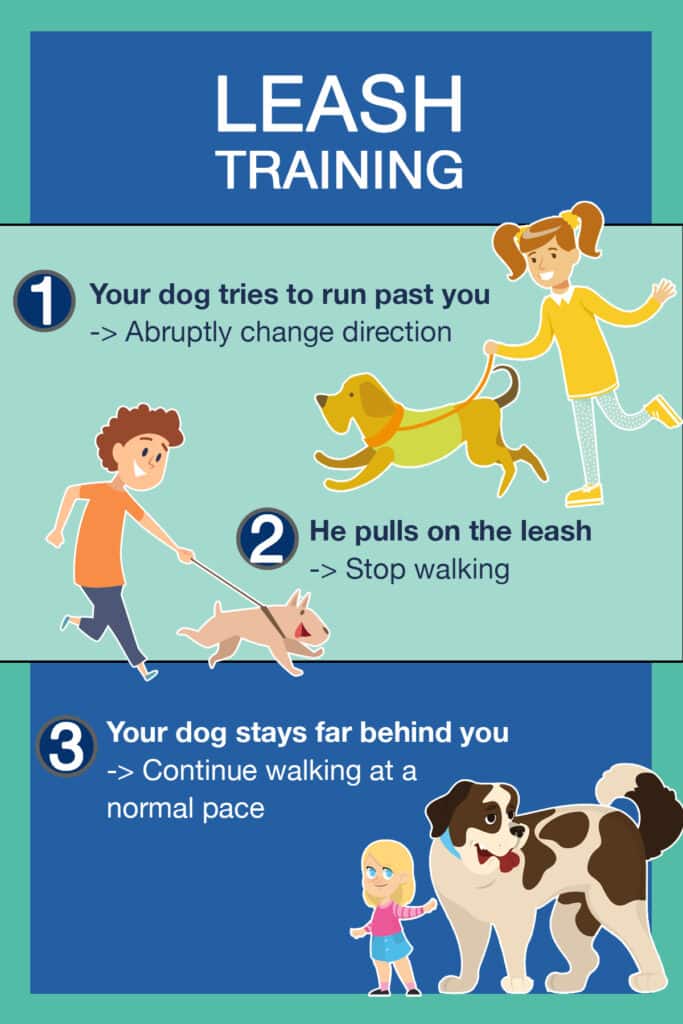
Frequently Asked Questions
It is normal for puppies to pull on the leash as they are still exploring. When older dogs pull on the leash, it may be due to lack of training, breed, stress or too short walks.
If your dog starts to pull, you should stop immediately until he stops. If he does not stop, walk in the opposite direction. Under no circumstances should you pull your dog backwards.
In general, harnesses are preferable because they are much gentler than collars. Due to the better weight distribution of the harness, the neck vertebrae are relieved compared to the collar.
My Conclusion
Pulling on a leash is very natural for dogs. They want to explore their surroundings and pick up interesting scents.
Once you get used to pulling, it is very difficult to break the habit. However, with the right exercises and consistent training, you can reverse this attitude.
The important thing here is: Your dog must not succeed by pulling.
So forbid them every time. During walks, they should not be too distracted. Direct their attention back to you with little tricks.
If you do the recommended exercises consistently, your dog will soon walk calmly beside you. So nothing stands in the way of a relaxed walk..
You can find more step-by-step video tutorials on leash walking in our app.

My name is Anja Boecker, and I am a certified dog trainer and behavior consultant. With these articles, I want to help you to understand your dog better and to build an inseparable bond.
Share Now:

